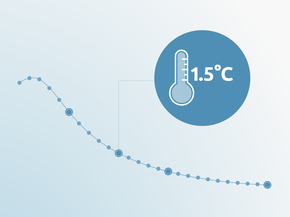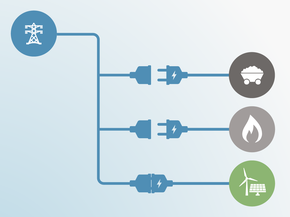Pledges And Targets
Paris Agreement
Japan’s NDC includes an emissions reduction target of 26% below 2013 levels in 2030, which translates to a 18% reduction from 1990 levels, excluding LULUCF, but including LULUCF credits in the target year. The target contains 37 MtCO2e of credits from LULUCF in 2030. A large share will come from forest management, as was the case for Japan’s pre-2020 targets—this reduces the effectiveness of the target.
LULUCF is an issue in the NDC, given that Japan intends to use credits obtained through LULUCF accounting to meet its 2030 target. According to the NDC, the Japanese government intends to use accounting rules “in line with approaches equivalent to those under the Kyoto Protocol.” This means that the activities of forest, cropland/grazing land managements and re-vegetation are projected to generate a credit of roughly 2.6% of total GHG emissions excluding LULUCF in 2013. This reduces the effectiveness of the 2030 goal from an 18% reduction below 1990 levels to about 15%, which is reflected in our quantification of the NDC. In this context, it should be noted that the Paris Agreement requires the negotiation and adoption of a common approach to methodologies for accounting, and it cannot be assumed that the Kyoto Protocol accounting system will be adopted.
Another uncertainty with the NDC relates to Japan’s proposed overseas crediting system (JCM). According to the NDC, while no crediting from the JCM system was assumed in calculating the target bottom up, “accumulated emission reductions or removals by Fiscal Year (FY) 2030 through governmental JCM programs to be undertaken within the government's annual budget are estimated to be ranging from 50 to 100 million t-CO2” (Government of Japan, 2017). While there is room for interpretation, assuming that Japan achieves a cumulative JCM credit acquisition of 50–100 MtCO2 by linearly increasing the annual credit acquisition between 2014 and 2030, the credits acquired in 2030 would amount up to 6–11 MtCO2, which is roughly 0.5–0.9% of 1990 emissions. The potential impact of the JCM is not included in our assessment because it is not included in the bottom-up calculation of the NDC target level, and also because the future development of the scheme toward 2030 as well as the accounting approach under the Paris Agreement is uncertain.
Japan’s NDC is enshrined in the Plan for Global Warming Countermeasures (MOEJ, 2016), the establishment of which is obliged by the Global Warming Countermeasure Promotion Act and which was adopted by the Cabinet on 13 May, 2016. Japan has ratified the Paris Agreement on 8 November 2016.
2020 pledge
On 15 November 2013, Japan announced a new pledge to reduce emissions by 3.8% below 2005 levels by 2020. This pledge will result in an emissions level of 1,344 MtCO2e/yr in 2020, equivalent to 6% above 1990 levels when calculated in terms of IPCC AR4 GWPs. For its original Copenhagen pledge, Japan communicated a target of a 25% emissions reduction below 1990 levels by 2020 (Government of Japan, 2010). This target was conditional on the establishment of a fair and effective international framework, in which all major economies participate, and on agreement by those economies to ambitious targets.
The revised 2020 pledge assumes zero nuclear power in 2020. In addition, it has been estimated (Kuramochi, 2014a) that about 20 MtCO2e/yr of overseas credits could be used, adding a further 1.6% to the allowed domestic emission. However, due to the current status of the Clean Development Mechanism (CDM) as well as the development status of the JCM, it is uncertain if such an amount of credits would realistically be acquired. We therefore did not consider the impact of overseas credits in the 2020 pledge quantification.
We estimate that LULUCF accounting in the form of forest management leads to a credit of 38 MtCO2e in 2020 (Government of Japan, 2015), equivalent to around 3% of 1990 industrial emissions. As proposed by the Government of Japan these credits will lead to an allowed emissions level under the revised pledge of 1,375 MtCO2e in 2020, or around 9% above 1990 levels. In addition, the use of overseas credits can further increase the total allowed domestic emission levels under the pledge. This pledge has not yet been enshrined in domestic legislation (Kuramochi, 2014).
The revised 2020 pledge of November 2013 was a serious decrease in ambition compared to Japan’s original Copenhagen pledge of 25% below 1990 levels. Revision of the original pledge raises the 2020 target by more than 350 MtCO2e. While the Japanese government claims that this revision is mainly due to the future exclusion of nuclear energy from the energy mix (MOE, 2013), the basis of the 3.8% target is the pre-Copenhagen target (15% below 2005 levels) which was much less ambitious than the Copenhagen pledge.
Japan's Kyoto target (2008–2012) was at -6% relative to base year (1990) emission levels. Japan overachieved the target by reducing its emissions by 8.4% including LULUCF credits and the purchases of Kyoto units (MOEJ, 2014).
Long-term goal
The Plan for Global Warming Countermeasures (MOEJ, 2016) enshrines a long-term target to reduce Japan’s GHG emissions by 80% from current levels by 2050. The base year is not specified. Assuming that the base year is either 1990, 2005 or 2013, the target emission level for 2050 ranges at roughly 250–280 MtCO2e/yr.
During FY2018 the Government of Japan plans to develop a long-term strategy to be submitted to the UNFCCC. Both the Ministry of the Environment (MOEJ) and the Ministry of Economy, Trade and Industry (METI) have laid groundwork and published reports in 2017, but they are fundamentally different in their directions. The MOEJ report (MOEJ, 2017b) focuses on how to achieve the 80% by 2050 reduction target domestically, and emphasises the need for early introduction of a fully-fledged, nation-wide carbon pricing scheme (as opposed to the current global warming tax, which is less than 3USD/tCO2). By contrast, the METI report (METI, 2017b) emphasises the difficulty of achieving the 80% reduction domestically and focuses instead on Japan’s international contribution to global emissions reductions. The METI report is also critical about the introduction of carbon pricing in the near term.

Further analysis
Latest publications
Stay informed
Subscribe to our newsletter






